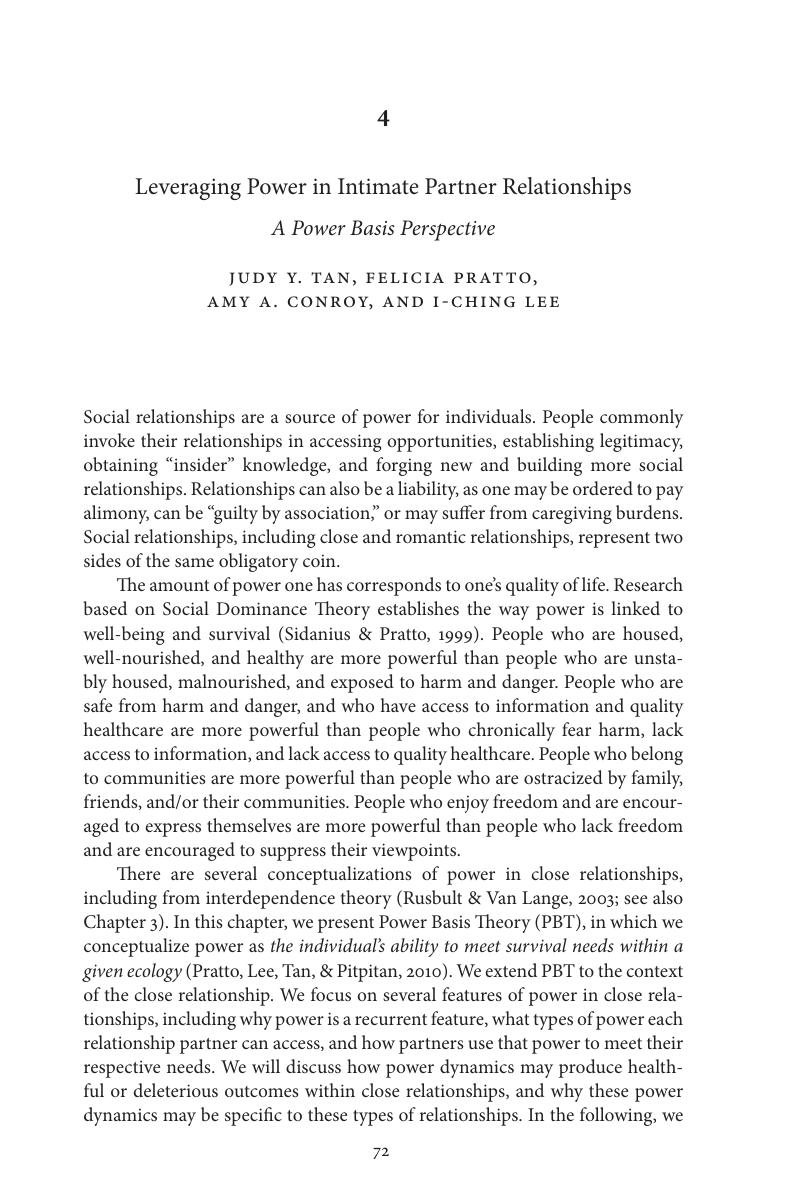Book contents
- Power in Close Relationships
- Advances in Personal Relationships
- Power in Close Relationships
- Copyright page
- Contents
- Figures
- Tables
- Contributors
- Acknowledgments
- Introduction: Power in Close Relationships
- Part I Power in Close Relationships: Theoretical Perspectives
- 1 An Evolutionary Perspective on the Role of Status in Close Relationships
- 2 Attachment Insecurity and the Regulation of Power and Dependence in Intimate Relationships
- 3 Interdependence Perspectives on Power in Relationships
- 4 Leveraging Power in Intimate Partner Relationships
- 5 The Dyadic Power-Social Influence Model
- 6 The Impact of Multilevel Sources of Power on Intimate Relationship Functioning
- Part II Power in Close Relationships: Interpersonal Contexts
- Index
- References
4 - Leveraging Power in Intimate Partner Relationships
A Power Basis Perspective
from Part I - Power in Close Relationships: Theoretical Perspectives
Published online by Cambridge University Press: 19 February 2019
- Power in Close Relationships
- Advances in Personal Relationships
- Power in Close Relationships
- Copyright page
- Contents
- Figures
- Tables
- Contributors
- Acknowledgments
- Introduction: Power in Close Relationships
- Part I Power in Close Relationships: Theoretical Perspectives
- 1 An Evolutionary Perspective on the Role of Status in Close Relationships
- 2 Attachment Insecurity and the Regulation of Power and Dependence in Intimate Relationships
- 3 Interdependence Perspectives on Power in Relationships
- 4 Leveraging Power in Intimate Partner Relationships
- 5 The Dyadic Power-Social Influence Model
- 6 The Impact of Multilevel Sources of Power on Intimate Relationship Functioning
- Part II Power in Close Relationships: Interpersonal Contexts
- Index
- References
Summary

- Type
- Chapter
- Information
- Power in Close Relationships , pp. 72 - 85Publisher: Cambridge University PressPrint publication year: 2019



